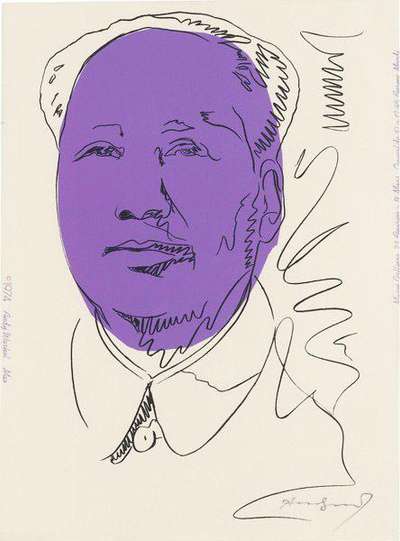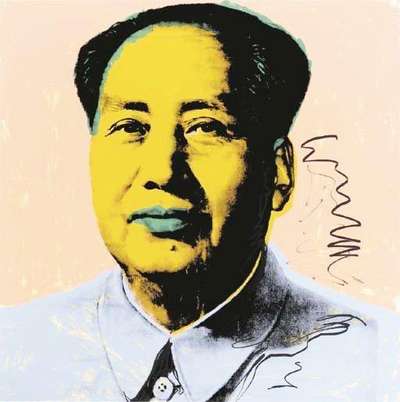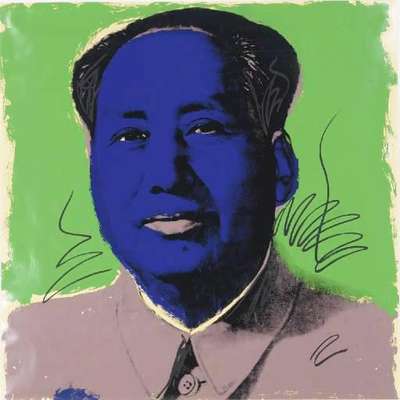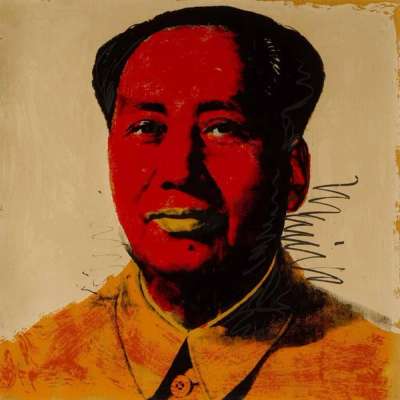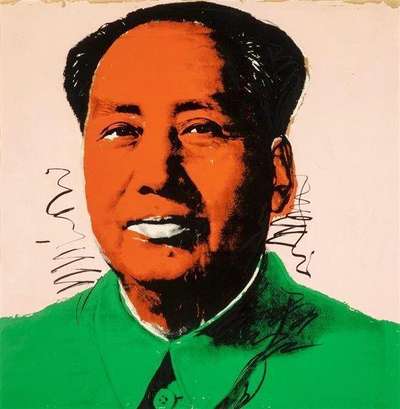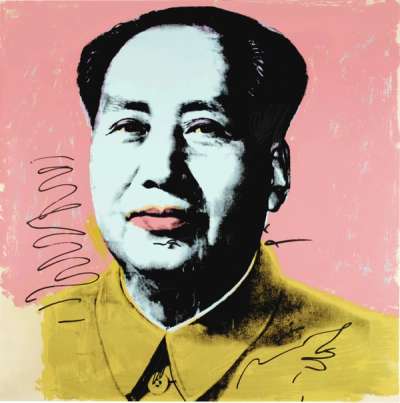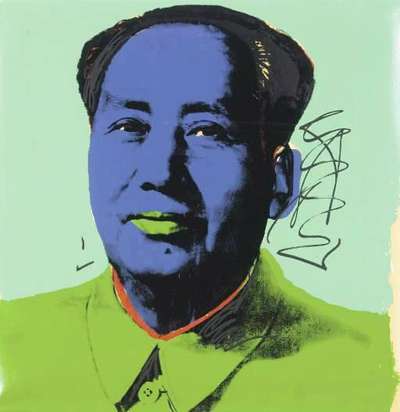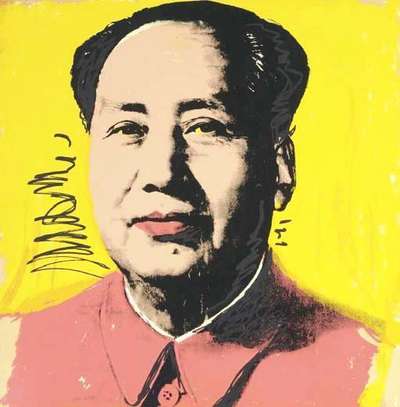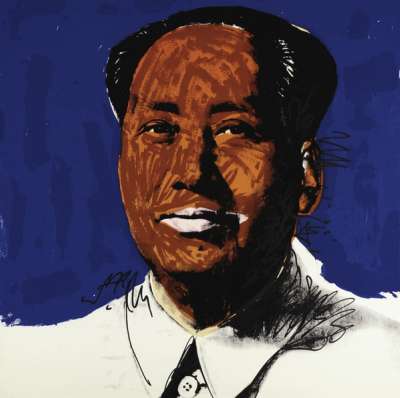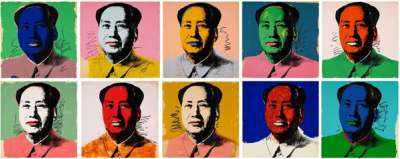
Mao (F. & S. II.93)

Mao (F. & S. II.93)
Signed Print
Andy Warhol
£30,000-£45,000Value Indicator
$60,000-$90,000 Value Indicator
$50,000-$80,000 Value Indicator
¥280,000-¥410,000 Value Indicator
€35,000-€50,000 Value Indicator
$290,000-$440,000 Value Indicator
¥5,740,000-¥8,610,000 Value Indicator
$40,000-$60,000 Value Indicator
AAGR (5 years) This estimate blends recent public auction records with our own private sale data and network demand.
There aren't enough data points on this work for a comprehensive result. Please speak to a specialist by making an enquiry.
Medium: Screenprint
Edition size: 250
Year: 1972
Size: H 91cm x W 91cm
Signed: Yes
Format: Signed Print
TradingFloor
Track this artwork in realtime
Watch artwork, manage valuations, track your portfolio and return against your collection
Track auction value trend
Auction Results
| Auction Date | Auction House | Location | Hammer Price | Return to Seller | Buyer Paid |
|---|---|---|---|---|---|
| September 2024 | Phillips London | United Kingdom | |||
| March 2023 | Sotheby's Online | United Kingdom | |||
| October 2022 | Galerie Gloggner Luzern | Switzerland | |||
| January 2022 | Ressler Kunst Auktionen | Austria | |||
| September 2020 | Bonhams Los Angeles | United States | |||
| October 2019 | Freeman's | United States | |||
| April 2019 | Christie's New York | United States |
Meaning & Analysis
Mao (F. & S. II.93) from the Mao series (1972) is one of Andy Warhol’s most recognisable prints that shows a portrait of the formidable communist leader of China, Mao Zedong with a bright green face. To create the image, Warhol appropriated an official propaganda image of Mao, from a publication called the Little Red Book, that was widely disseminated throughout China as a communist political tool.
The pervasiveness of Mao’s image captured Warhol’s attention, likening the original image to his own screen prints of celebrity icons: ‘I have been reading so much about China. They’re so nutty. They don’t believe in creativity. The only picture they ever have is of Mao Zedong. It’s great. It looks like a silkscreen.’
Warhol heavily manipulates the colour of the original image, giving Mao a bright green face, pink lips and pink tunic, set against a blue backdrop. Gestural brushstrokes and lines can be seen on the print, mimicking the bold painting style championed by the Abstract Expressionist movement that was synonymous with the capitalist American ideals of individual expression. Reproducing this image over and over through the screen printing method, Warhol points to the suppression of individual expression in Mao’s communist China and directly compares this to the dissipation of mass-media images in 1970s America.
Andy Warhol was a leading figure of the Pop Art movement and is often considered the father of Pop Art. Born in 1928, Warhol allowed cultural references of the 20th century to drive his work. From the depiction of glamorous public figures, such as Marilyn Monroe, to the everyday Campbell’s Soup Can, the artist challenged what was considered art by blurring the boundaries between high art and mass consumerism. Warhol's preferred screen printing technique further reiterated his obsession with mass culture, enabling art to be seen as somewhat of a commodity through the reproduced images in multiple colour ways.
